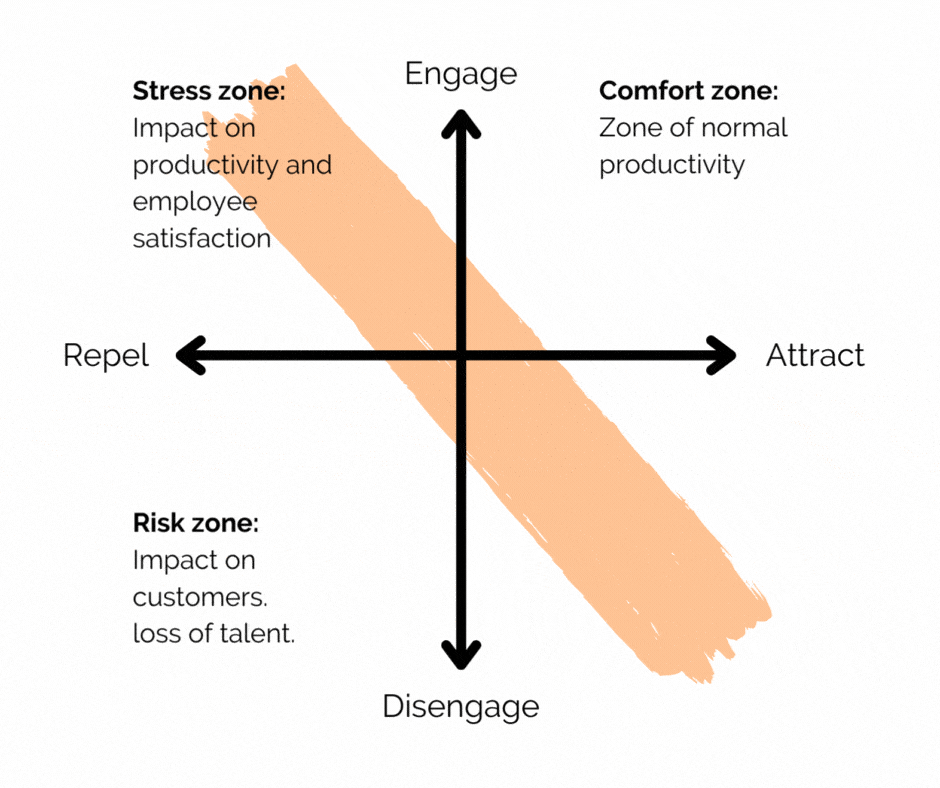Learning To Lead Change Can Improve Everybody's Mental Health
Let's talk about change and mental health
Leaders must acknowledge the challenges that organisational change brings. According to Gartner, over 80% of employees experience cultural tensions or competing priorities during transformations. Both create stress and worsen performance.
Working with the Alliance Against Depression team in Fremantle, Melville and Cockburn reminded us about the issues that arise when change occurs. These can include above-average health issues and sick days, turnover rates, or even self-harm and suicide.
Mental health problems are on the rise. In fact, studies say over a quarter of people will experience a mental health problem yearly, and it's estimated that by 2030, depression will be the leading cause of death.
As change leaders, we encourage businesses and leaders to take no-regret steps every day towards the mental well-being of their people. That's why learning to lead change is a crucial skill every change leader must possess.
Understanding the impact of change on our mental well-being
A recent global change has affected almost every one of us. The disruption caused by the pandemic surfaced many emotions from avoidance, overwhelm and panic to hope.
Whilst some people shut their eyes to the threat, many started hoarding toilet paper, and others created a contingency plan and took action. Change-resilience is one of the 6 Change Leadership capabilities we teach. Resilience allows you to bounce back quickly and motivate others to do the same.
We use the 4F model to explain organisational and individual change, reactions, and impacts. Changes are often met with resistance and fight, flight, freeze reactions. But individuals that fight and freeze under uncertainty experience high levels of stress. Shortening the time people spend in the Stress- and Resistance-zone has a significant positive impact on the mental well-being of a person.
With leading change you learn the skills and tools to be change-resilient that will help you maintain a calm, decisive and constructive nature - even under pressure. As you form this habit, you'll notice a change in the mental health of your team in the long run.
Here are our top 3 steps to practice resilience:
Use exposure therapy and proven tools to practice fast recovery from adversity
First, maximise the benefits of using practical tools. Resilient change leaders regularly practice tools to respond rapidly to adversity. The Rapid Change Plan is one of the methods we highly recommend when you face a new change.

How can I cope when things get out of control?
We hit the panic button when confronted with the unexpected. Good news! We developed the perfect solution. Try the Resilient Change Leader online course for free, and gain control, learn rapid change planning and focus your motivation.
Mindfully and without judgement, acknowledge your challenges
Second, articulate how people react to change. You might find The 4F model above to help you. Knowing that uncertainty triggers fight, flight or fear is the key to naming and overcoming those emotions. Once labelled, emotions soften, and you can think more positively about the things to come.
Motivate yourself to take proactive steps
Third, commit to taking action. A vision is not hung up on the specifics of the process. Daily visualisation feeds the Reticular Activating System in your brain the visuals it needs to start paying attention to. A vision board or visual change roadmap acts as a fantastic motivator for you and your team to keep moving and overcome setbacks.
Challenge, Control and Commitment are the three C’s of leading change with resilience. Every time you practice one of these three actions, you are rising to the challenge, taking control and committing to your own and others’ mental wellbeing.
Successful Change Leaders Sail Through Disruptions
How can I cope when things get out of control?
We hit the panic button when confronted with the unexpected. Good news! We developed the perfect solution. Try the Resilient Change Leader online course for free, and gain control, learn rapid change planning and focus your motivation.


Eva is one of the masterminds behind Approach Services' blog and The 6 Cents of Change. She is an innovator, trainer and change manager. Her work has been published in the Schmalenbach Journal of Business Research. In her spare time, she enjoys camping with her two little boys and permaculture gardening.
Subscribe to our monthly newsletter The 6 Cents of Change and follow us on LinkedIn to learn more!

 (08) 6102 0343
(08) 6102 0343





